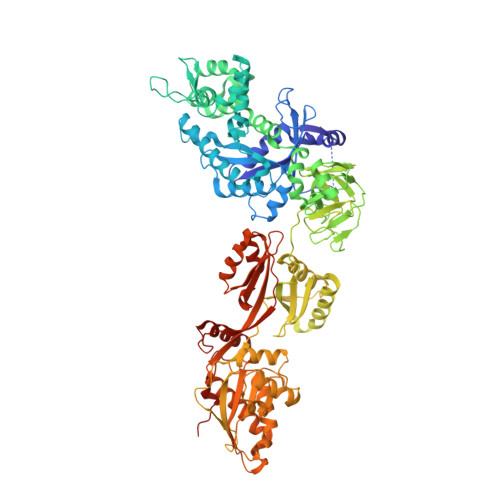Sordarin derivatives induce a novel conformation of the yeast ribosome translocation factor eEF2
Soe, R., Mosley, R.T., Justice, M., Nielsen-Kahn, J., Shastry, M., Merrill, A.R., Andersen, G.R.(2007) J Biol Chem 282: 657-666
- PubMed: 17082187
- DOI: https://doi.org/10.1074/jbc.M607830200
- Primary Citation of Related Structures:
2E1R, 2NPF - PubMed Abstract:
The sordarins are fungal specific inhibitors of the translation factor eEF2, which catalyzes the translocation of tRNA and mRNA after peptide bond formation. We have determined the crystal structures of eEF2 in complex with two novel sordarin derivatives. In both structures, the three domains of eEF2 that form the ligand-binding pocket are oriented in a different manner relative to the rest of eEF2 compared with our previous structure of eEF2 in complex with the parent natural product sordarin. Yeast eEF2 is also shown to bind adenylic nucleotides, which can be displaced by sordarin, suggesting that ADP or ATP also bind to the three C-terminal domains of eEF2. Fusidic acid is a universal inhibitor of translation that targets EF-G or eEF2 and is widely used as an antibiotic against Gram-positive bacteria. Based on mutations conferring resistance to fusidic acid, cryo-EM reconstructions, and x-ray structures of eEF2, EF-G, and an EF-G homolog, we suggest that the conformation of EF-G stalled on the 70 S ribosome by fusidic acid is similar to that of eEF2 trapped on the 80 S ribosome by sordarin.
Organizational Affiliation:
Centre for Structural Biology, Department of Molecular Biology, University of Aarhus, DK-8000 Aarhus C, Denmark.
















